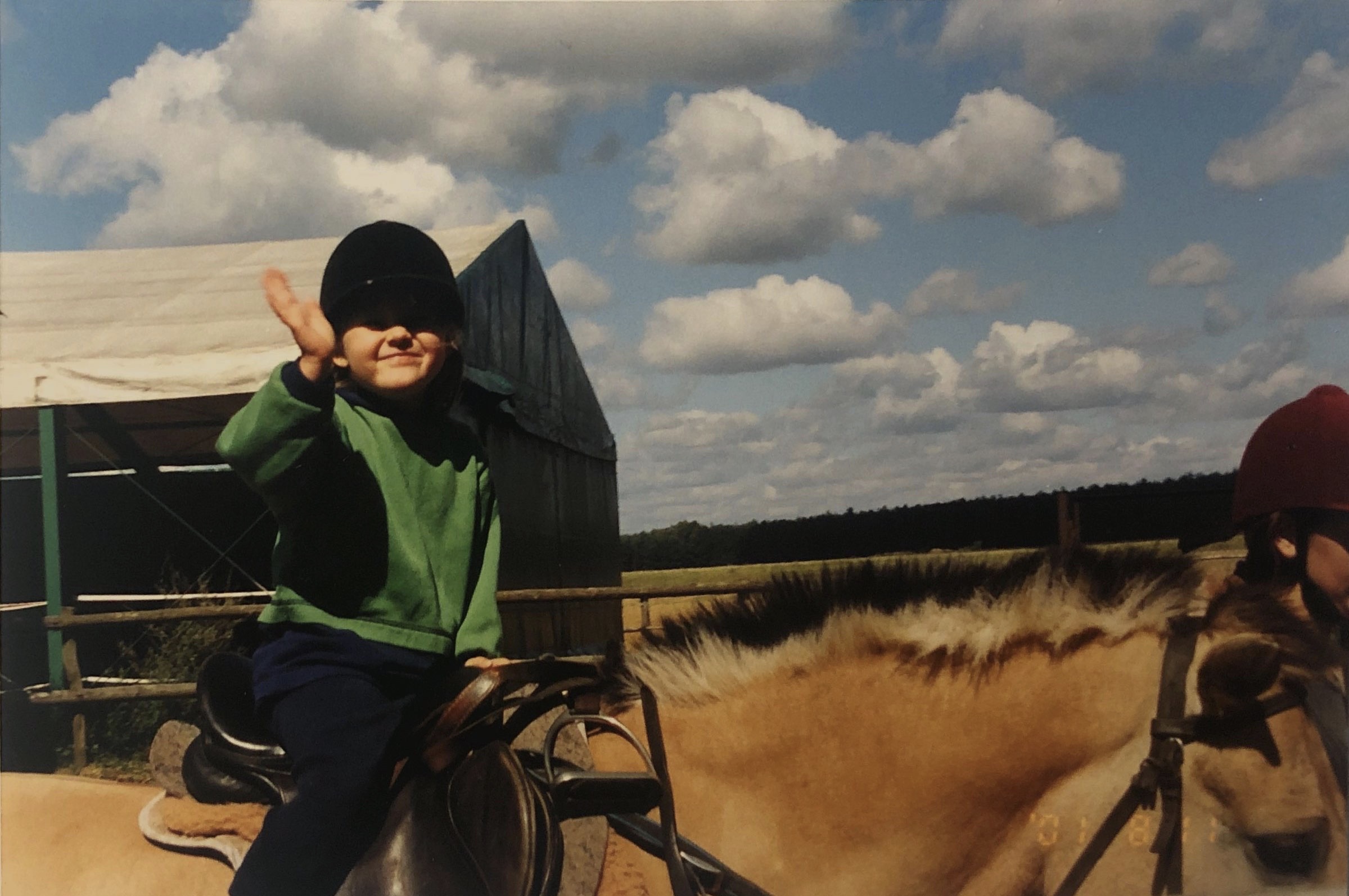When I was a child, before we moved to the United States, my family owned a small cottage in a village in the middle of the forest in Poland. My parents rented a flat in the city, and during the week we’d stay there while they worked, but on the weekends and during the summers we’d move back to the village. I spent my childhood outside among the trees. It was in those woods that my love for animals flourished. I saved snails and dung beetles from being squashed, cycling the dirt path to the nearby lake. I spent an entire day following a hedgehog and observing his little whims. I sat in a tree with a friend while we waited for a wild boar to pass, not daring to breathe in case he heard us.
That forest was teaming with life. But not all of it was wild. It was while living in that village that I met my first animal friend, a horse named Borsuk. One of the residents in the town had set up a small stable and taught the kids in the neighborhood how to ride horseback. A quick disclaimer, I was not vegan at the time, and would not ride horseback at this point with what I now know. I was five-years-old when my parents took me to the stables and signed me up for classes. Borsuk was the first horse I ever rode, and I loved him with my entire heart. He was stubborn and loved the sugar cubes I brought him every day, even on the days I didn’t ride. He was a Przewalski Horse, a species that is now endangered.

The Przewalski horse used to live all over Europe and Asia, now it predominantly lives in Mongolia. Known as the last wild horse, the subspecies became endangered due to competition with livestock farming and hunting (the horses are used for food in some parts of the world). By the late 1950s, only 12 individuals were remaining. Through successful reintroduction into the wild, the species designation changed from “extinct in the wild” to the current “endangered.” But as the impact of climate crisis reaches catastrophic levels, the Prezewalski horse is facing new and unprecedented challenges.
This is hardly the only endangered species out there. In 2019 the UN released a report that warned that one million species in the world face extinction. This is an eighth of all species on the planet. What’s even worse is that the scientists from the committee specified that this is due to human interference. Mammals, birds, reptiles, fish, amphibians, crustaceans, insects, corals, and plants all have species that are disappearing from our shared home.
Last Monday, January 13th, the United Nations released a draft proposal to be discussed at the next BioDiversity Conference in Kunming, China, at the end of February. The proposal lists twenty global goals to reach by 2030 such as restoring freshwater, reducing pollution, increasing strictly protected wilderness areas, integrating biodiversity planning into local and developmental processes, and promote education around biodiversity.
A more pointed language (at least for the UN) toward changing our untenable, late-capitalist system is particularly welcome: “Reform economic sectors towards sustainable practices, including along their national and transnational supply chains, achieving by 2030 a reduction of at least [50%] in negative impacts on biodiversity.” On the other hand, the UN exhorts that we must take our own individual responsibility as well: “People everywhere take measurable steps towards sustainable consumption and lifestyles, taking into account individual and national cultural and socioeconomic conditions, achieving by 2030 just and sustainable consumption levels.”
Similar goals were laid out in 2010 during the summit in Japan, but we largely failed to achieve the 2020 targets. Now it is more important than ever for us to step up and make the changes necessary to save the biodiversity of the Earth.
If all of this isn’t daunting enough, scientists have warned us that we are amidst the sixth mass extinction as species extinction rates are tens of hundreds of times faster than in the last 10 million years. The previous mass extinction happened due to a meteor hitting the Earth and wiped out all of the dinosaurs. However, this time around our lifestyles are causing thousands of species to die out and more to be endangered. Shrinking habitats caused by agriculture and urban development, exploitation of natural resources, pollution, and climate change are all threats to living beings on this planet.
If we want to save the planet, it is extremely important that when this discussion is brought about, it is remembered that everything and everyone is connected. All life forms have a part to play in this ecosystem, one that we are not exempt from. The dying corals mean less fish, and less fish means that the fishing societies have nothing to live off of. Some of the endangered species are also plants that we also depend on for food and medicine. This brings us to bees who are still endangered. We greatly count on bees for our food source, whether we consume plants or animals. Less biodiversity in the water means less clean water to sustain us. This isn’t just about us, or the plants, or the insects, or the birds, or the other mammals. This is about all of us. If we want to survive, we need to make this new decade the decade that we learn how to live in harmony with nature.
__
Photo: Coral Reef by Jimmy Chang on Unsplash; Iga’s childhood photo with Borsuk




